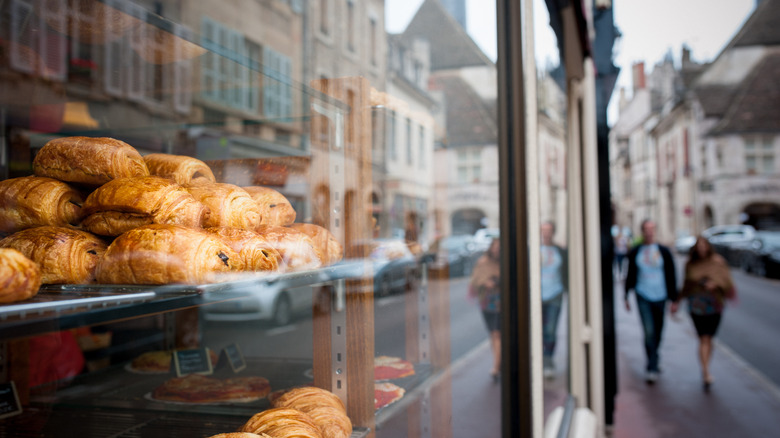Rick Steves' Palate Never Gets Tired Of The Food In These Two European Countries
"How was the food?" Possibly the most common question directed at fresh-off-the-plane travelers returning from Europe, and it's a fair inquiry. With a delectable montage of seasonal goods and a deep-seated passion for the art of local cuisine, France and Italy, in particular, have mastered the perfection of simple meals with an abundance of flavor and flair. Long office hours followed by slow commutes in rush hour traffic are a typical part of the American lifestyle, so whipping up a home-cooked meal is often the last thought that crosses our minds after a long day at work, resulting in a sheet pan of veggies, at best. French and Italian culture invites a relaxing retreat from America's fast-paced lifestyle — a luxury found especially in food culture.
Born and raised in Barstow, California, but as well-versed in European culture as any French or Italian native, Rick Steves has given multiple shoutouts over the years to these two European foodie destinations that have pioneered legendary culinary platforms. Diving deep into how each cuisine captivates travelers from around the world, Steves has cultivated some insightful tips for navigating the foodie locale of France and Italy. Food is as much a part of European culture as is basic socialization (often combined for the best of both worlds). Therefore, taking advantage of the distinctive, prolific harvest of ingredients that permeates these regions is essential while abroad.
Italy — A nationwide farmer's market
According to Steves, Italians have a very different dialogue for communicating about food, from styles of eateries to the diversity of courses that comprise a meal. From elegant ristorantes and relaxed trattorias to bougie osterias, Italy has a dining style to suit every occasion and every flavor palate. To stay on budget while still treating yourself to a high-quality meal, Steves loves scoping out an authentic enoteca — the Italian equivalent of a wine bar. According to Steves, "signs of a good restaurant include a low-rent location, lots of locals, and a short, handwritten menu available in only the local language."
While grocery stores do exist in Italy, they're often small and compact, with limited options. Farmers markets are the place to visit when on the hunt for the best batches of fresh produce. Unless you visit during the same time of year, you'll likely never see the same dishes twice in Italy. Winter produces a fruitful harvest of kale, potatoes, oranges, and onions, while spring and summer deliver an enchanting montage of cucumbers, basil, peaches, and lemons. Italians love to get fancy with their cooking, but what makes the food stand out in this culinary haven isn't the type of ingredients but the quality of ingredients. The simple yet flavorful combination of pasta, tomatoes, and olive oil goes much further in Italy when the fettuccine has just been rolled out and each tomato is freshly picked off the vine.
French baguette, anyone?
Let's not undermine the alluring, sacred presence of the Eiffel Tower. At the same time, boulangeries (bakeries) make up just as much of this country's culture as do cultural landmarks. Swinging by a local bakery for a buttery croissant and a quiche or two before heading out on a leisurely stroll underneath the Arc de Triomphe might just be one of the simplest yet greatest pleasures of your life. The French have formulated a set of innovative techniques that effortlessly elevate their coveted Parisian cuisine. Braising, poaching, and sautéing are just a few tactics that allow flavor combinations to shine through even more potently.
When in France, picnics will become your new daily staple — and for good reason. According to Steves, curating a basket of organic goodies in the streets of France is the easiest way to try a little bit of everything while exploring the colorful cuisine of France. He advises travelers to start at a fromagerie for a strong base of cheeses, complemented by cured meats at a charcuterie and fill in the rest of the plate with veggies and pastries from your next-door pâtisserie.
This DIY dining style might seem strange and a bit unrealistic to maintain on a daily basis, but is a deeply embedded component of French culture. Smaller portions savored over the course of a day is a rite of passage in France, where enjoying the company (and flavor) of a meal slowly is the way to one's heart.


